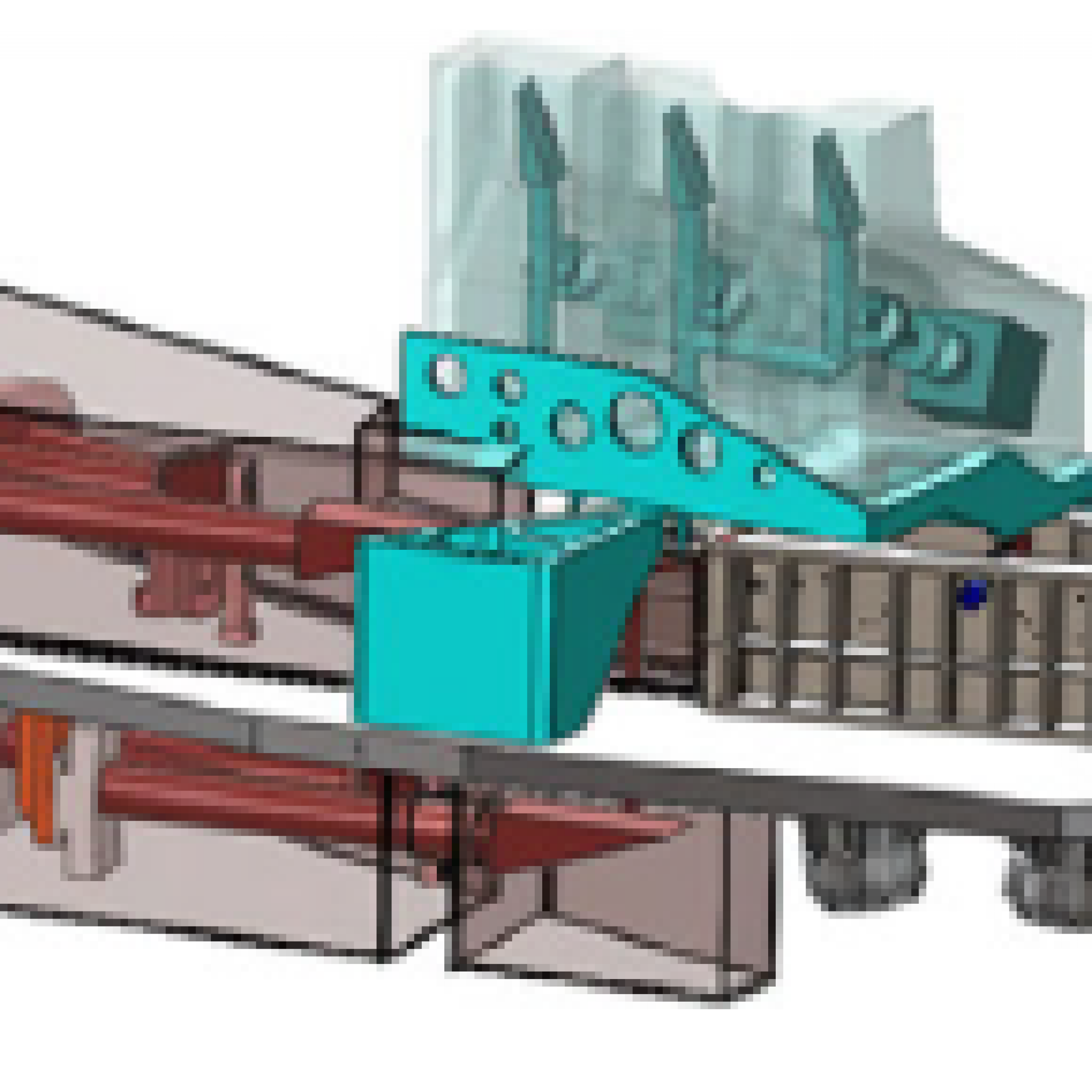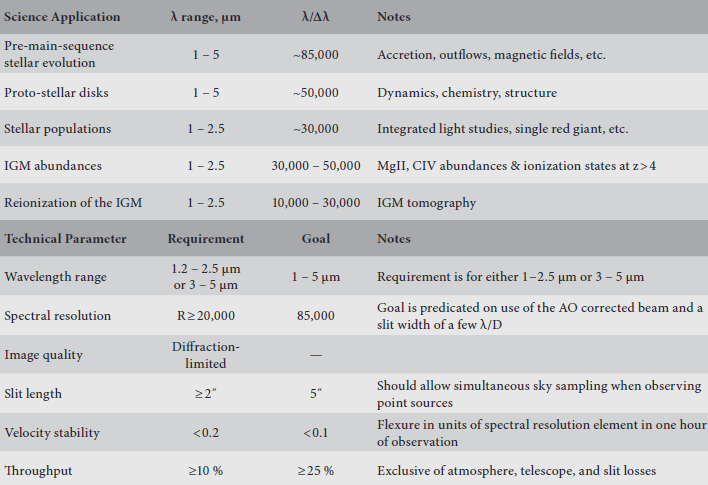
GMTNIRS
The GMT Near-IR Spectrograph - GMTNIRS is a single-object near- to mid-IR echelle spectrograph that provides an extraordinary spectral multiplex advantage through simultaneous coverage of the full JHKLM bands at resolving powers of 50,000 (JHK) and 100,000 (LM). This efficiency is enabled by the AO-feed from the GMT, multiple dichroic beam splitters, and silicon immersion echelle gratings developed by the instrument team. GMTNIRS has considerable technical heritage from IGRINS, an HK spectrograph with R=40,000, completed in 2017 by the same instrument team. GMTNIRS has only one configuration and only one moving part (the rotating pupil mask), promoting reliable operations and streamlined data analysis.
Science with GMTNIRS
GMTNIRS’s scientific and technical requirements are summarized in the Table below. Key scientific objectives include:
- The formation of planetary systems and their host proto-stars
- Details of the disks surrounding young stars and planets
- Characterization of Jupiter-mass planets
- Properties of brown dwarfs
Scientific and technical requirements for GMTNIRS:

GMTBrO participation in GMTNIRS
The Giant Magellan Telescope Near Infrared Spectrograph (GMTNIRS) is a high resolution near infrared spectrograph selected as a first generation instrument for the Giant Magellan Telescope (GMT). It is a collaboration between the University of Texas at Austin, and the Korea Astronomy and Space Science Institute.
This instrument is currently focused on the development of the high technology immersion gratings for infrared.
GMTBrO's main area of participation was systems engineering in early 2019. Among the activities by GMTBrO were the development of interface control documents, revision of GMT documentation requirements, draft of major documents in preparation for the project timeline, development of operational concepts and procedures, and outline of requirements to convert MagNIFIES into GMTNIRS.
GMTNIRS will be first commissioned as the Magellan Near-IR Five-band Immersion grating Efficient Spectrograph (MagNIFIES), in a partnership with The Carnegie Institution. This will allow it to be deployed to GMT as a calibrated instrument with an experienced user community.
We plan to send a member of our SE group to Austin in 2020, for discussions about MagNIFIES and GMTNIRS and opportunities for GMTBrO involvement in these instruments.
GMTBrO 2025